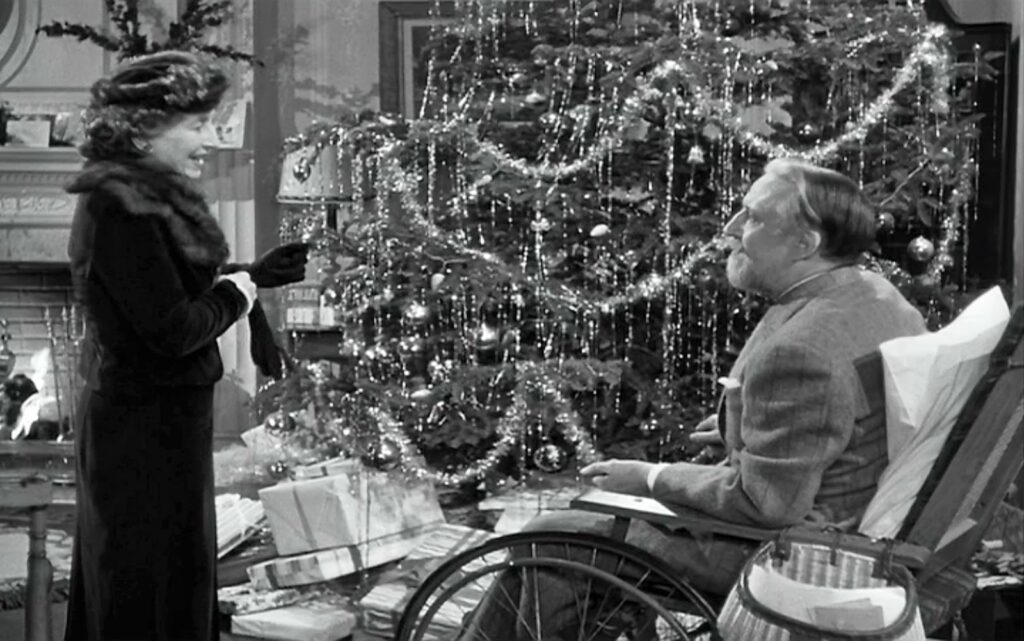
The Man Who Came To Dinner (1944) sees Monty Woolley reprising the title role that he originated on Broadway in the play by Moss Hart and George S. Kaufman. Woolley was so identified with the role that he became typecast and wound up laying what is essentially the same character in Since You Went Away (1944) and the popular favorite The Bishop’s Wife (1947).
In each of these three films Woolley is superb as the curmudgeon with a secret sentimental side who is just as likely to eviscerate a passerby with a tongue lashing as he is to play “grandpa” to a total stranger. Despite the presence of the iconic Bette Davis, The Man Who Came To Dinner is Monty Woolley’s film. The Man Who Came To Dinner follows the exploits of renowned writer and radio personality Sheridan Whiteside (Woolley) who, having fallen down some icy steps, is confined to the home of Ernest Stanley (Grant Mitchell) and his family. Bored in his midwestern setting, Whiteside begins meddling in other people’s affairs, particularly those of his Assistant (Davis).
In the late thirties and forties the playwriting partnership of Moss Hart and George S. Kaufman saw three of their collaborations adapted into hit motion pictures. The Frank Capra film You Can’t Take It With You (1938) may be the best known, but The Man Who Came To Dinner is by far the funniest. Barbs like “You simpering sopho” or “flea-bitten Cleopatra” are too inspired to be replicated even by their authors. The Man Who Came To Dinner is the screwball comedy at its most melodramatic and verbally unique.
In addition to Woolley’s career best performance and Davis’ excellent turn as the lovesick heroine, The Man Who Came To Dinner boasts standout appearances by Jimmy Durante, Ann Sheridan, Reginald Gardiner and the inimitable Mary Wickes of White Christmas (1954) fame. Each of these players enters the action in orbit of the wheelchair bound Whiteside and is afforded a proper showcase to their strengths. The comedy is as diverse as the players’ personalities, but it is all grounded in the grumpy rumblings of Woolley who always remains center stage.
The Man Who Came To Dinner, with its Christmas setting, cemented Woolley as the “Scrooge” of American cinema of the forties. Woolley’s dual persona of paternal warmth and sadistic intellectualism made him the perfect grump for the late war and early post-war periods. His work in The Man Who Came To Dinner is excellent and this film deserves to be a holiday staple just as much as The Bishop’s Wife.
